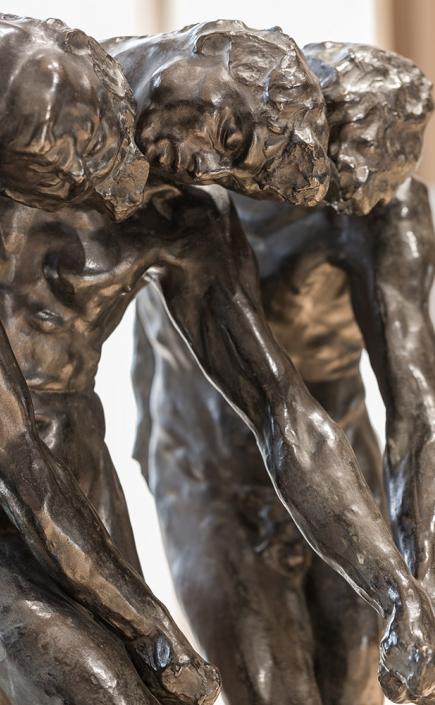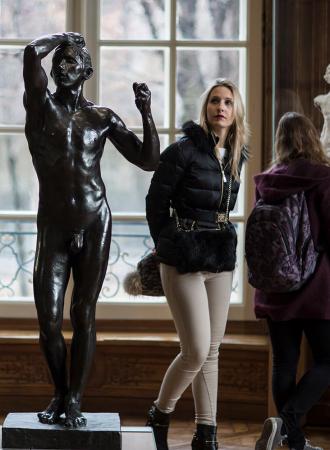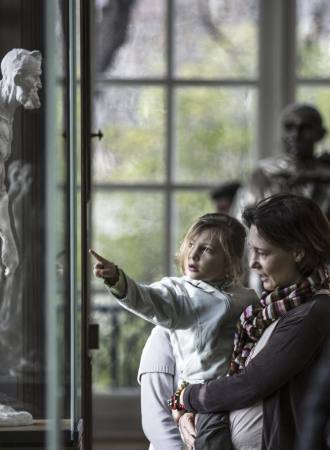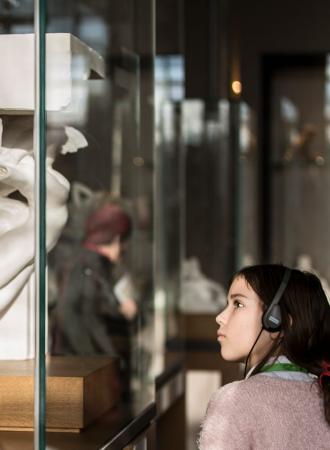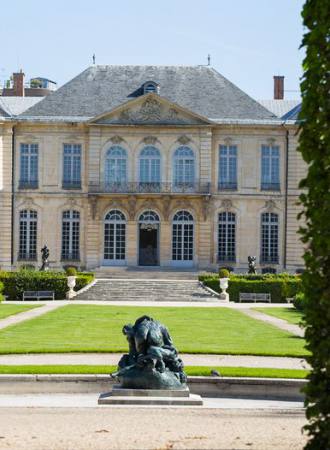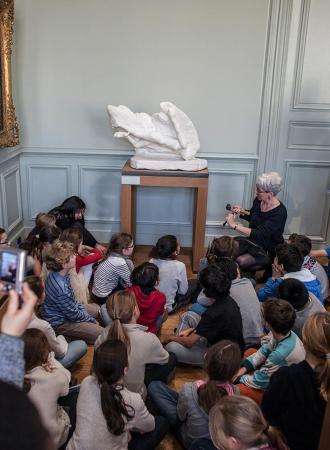Search the site
Icarus, also known as Vulcan
Auguste Rodin (1840-1917)
Annotated, top right: Icare/bas and bottom: Vulcain/le soleil couchant (“Vulcan/the setting sun”)
There are fewer than thirty watercolors by Rodin in such bright colors. In these, the figure is placed in the center of the sheet and sometimes extends beyond the frame, as the right foot does here; Rodin made subtle use of the paper’s edges, occasionally overflowing the borders. The relatively soft skin tones of this figure contrast strongly with the swiftly painted red background, on which the brush strokes used to darken the watercolor are visible. Rodin often roughly outlined his subjects with color―a technique that allowed him to starkly accentuate the nude figure, and an indication that his aim was to capture the energy and movement of the living model rather than to create a realistic likeness.
The title of the drawing comes from the inscriptions Rodin added after completing his work, as he did on several occasions; these often refer to antiquity and classical mythology and propose different interpretations depending on how the drawing is positioned. This figure, probably drawn from a model lying on a sofa, is called Vulcan when placed vertically, but with the head at the bottom of the sheet it becomes a falling Icarus. Rodin also made sculptures of Icarus―one of the few male figures among his many female nudes.
Discover the themes related to the work
Completion date :
About 1900
Dimensions :
H. 32.5 cm; W. 24.8 cm
Materials :
Graphite pencil and watercolor on paper
Inventory number :
D.04253
Credits :
© musée Rodin - photo Jean de Calan
Additional information
Iconography
- Icarus, also known as Vulcan(zip, 527.5 ko)
